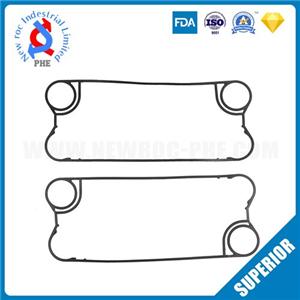Some limitations of plate heat exchangers
Although the plate heat exchanger is a high-efficiency, energy-saving and low-cost heat exchange equipment, it is not perfect, and its own application conditions also have certain restrictions.
1. The working pressure is below 2.5MPa
The plate heat exchanger is sealed by the heat exchanger gasket, the periphery of the seal is very long, and the support of the two seals of the corner hole is poor, and the heat exchanger gasket cannot get enough pressing force, so At present, the maximum working pressure of the plate heat exchanger is only 3.0MPa; when the area of the single plate is more than 1m2, the working pressure is often lower than 3.0MPa.
2. Working temperature is below 250℃
The working temperature of the plate heat exchanger is determined by the temperature that the gasket of the heat exchanger can withstand. When using rubber elastic gaskets, the maximum working temperature is below 200℃; when using compressed asbestos wool gaskets (Caf), the maximum working temperature is 250~260℃.
3. It is not suitable for the heat exchange of the medium that is easy to block the channel
The passage between the heat exchanger plates of the plate heat exchanger is very narrow, generally 3~5mm. When the heat exchange medium contains larger solid particles or fibrous materials, it is easy to block the passage between the heat exchanger plates. For this kind of heat exchange occasions, you should consider installing a filter device at the entrance, or adopting a regenerative cooling system.
Therefore, under the above conditions, the plate heat exchanger should be carefully selected.




